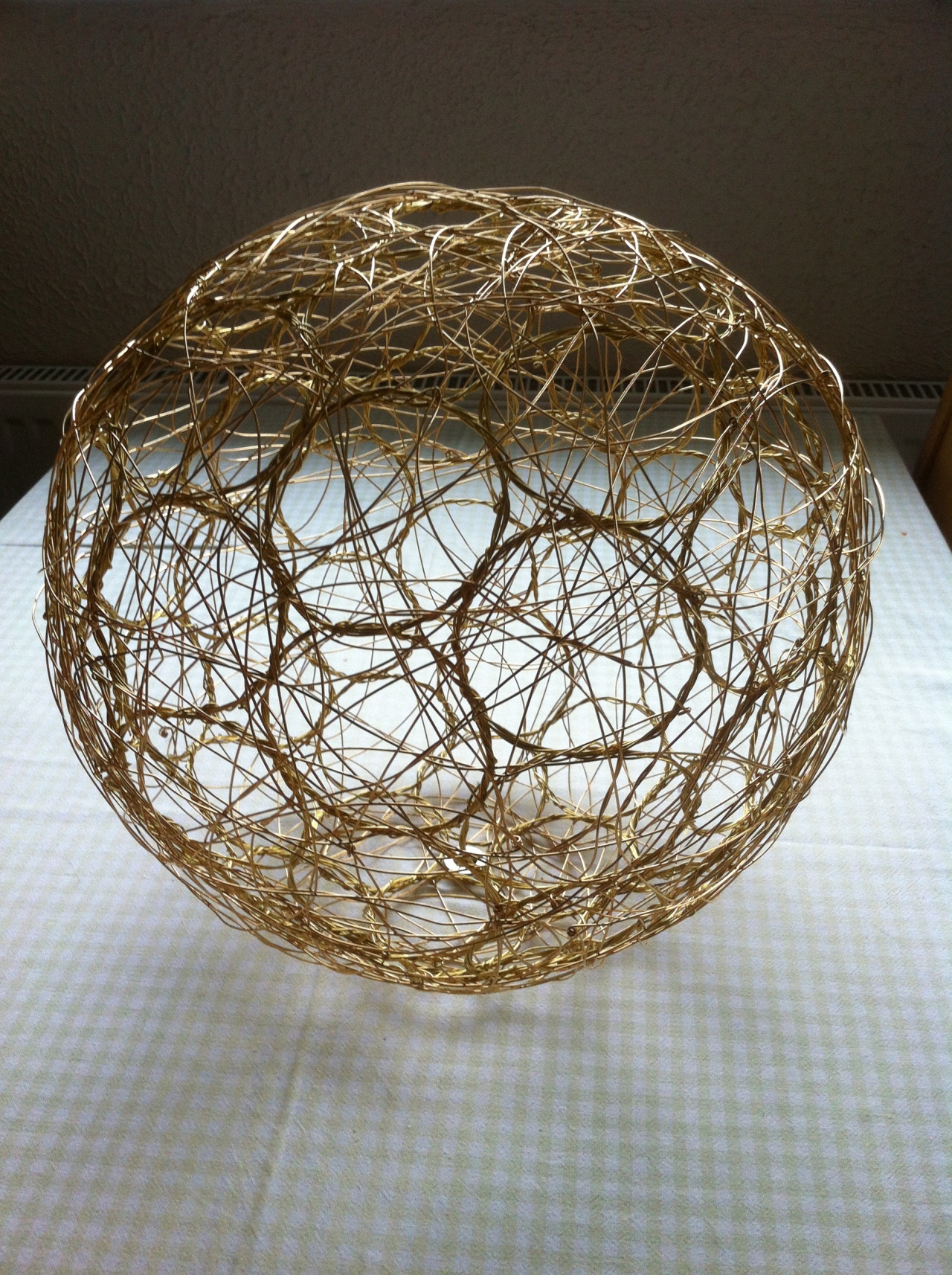Whilst on holiday on the Isle of Wight, I came across a second hand book store, having begun research on different styles of weaving I asked if they happened to have anything with corn dollies. I was surprised with the reply “oh yes, follow me to the corn dollie section” I followed the gentleman up three flights of stairs past endless rooms stacked floor to ceiling with books, until we arrived in a room where he pointed to a labelled shelf, “here is the weaving section”. I could have stayed there all day, he had amassed every possible type of book featuring many weaves that I had never come across. I found this delightful book by the Womens Institute
The willow is now trapped within the mould.
The willow and the wax tubes are sealed
Wax tubes are laid alongside the 8ft length of willow and sprues added
The willow branch is laid on a bed of clay
Woven bronze sculpture: a new method of weaving
During the last six years I have experimented with natural materials such as willow to create sculptural work for the landscape. Using a welded steel frame within the sculpture helps to provide a structure for the work and helps support the willow which is woven onto the surface.
My sculptures are shown widely across the UK in a variety of curated exhibitions and at one large event each year, the RHS Chelsea Flower Show.
Working with natural materials offers a tactility to the work that I really enjoy, in addition to creating my own trademark weaving style that is unique to my work. The method of applying the willow in circular layers is also a unique characteristic of my sculptures.
The sculptures are often inspired by geometric forms, and the sphere has become a particular favourite of mine, the approach to creating spherical work is quite unlike any other shape, it allows the material to be applied in a continuous length that appears to have no beginning or end. The sphere lends itself to numerous ideas and concepts, and can fit many styles of landscape or space.
Willow has a limited life span and as a result sculptures are sold with this in mind with a price that reflects the life span.
After researching different materials that could be woven in the same hand woven process that I enjoy, I found that there was very few options available that could replicate both the tactile surface, and the colours and tones of the material like that of the willow. However there was one that could potentially work, cast Bronze.
After discussing my ideas with a number of UK artists whom use bronze in their work, they felt that it was technically impossible to cast one of my sculptures due to sheer number of undercuts and voids that feature in my woven work.
I’ve continued my research into bronze sculptures and could not find any examples of UK artists who create bronze sculptures in the manner of my own, so could not seek any peer mentoring for my idea.
But, I have found a way! watch this space over the next few months as I reveal and discuss this new innovation of a hand woven cast bronze sculpture.
A brass woven sphere and a copper woven sphere ready for the decorative weave to be added. You can see also a stainless steel washer has been woven into the frame, this is to provide an anchor point for the plinth.
Metal weaving cont. the experiments with weaving metal has come to an end, the process used is pretty much the same as weaving with willow, but the strenuous nature of wire on the fingers is very different (See earlier post about the physicality of art). The frame work begins with a single circle of woven wire, then further circles are added, weaving them in to the frame work as you go. Once a complete sphere of circles is finished then the next layer is added, just like willow weaving, I call it my messy layer. The job of the messy layer is to cover the entire surface with a mass of lengths zig zagging across the surface, this has two important factors. One - to cover over as many open spaces a possible, and Two - to provide anchor points for the decorative weave later.
The seeds and pod are fixed firmly in place and awaiting re-paving and some rain to turn the Corten steel rusty to give the sculpture colour, texture and tone.
Further seeds are positioned at Mickleover















